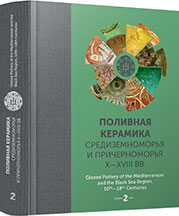Medieval Glazed Pottery: Archaeological Evidence from Rural Greece
Medieval Glazed Pottery: Archaeological Evidence from Rural Greece
Author(s): Effie F. Athanassopoulos
Subject(s): History, Archaeology, Cultural history, Middle Ages, 6th to 12th Centuries
Published by: Издательский дом Stratum, Университет «Высшая антропологическая школа»
Keywords: Southern Greece; Nemea; Medieval Ages; glazed ceramics; archaeological survey
Summary/Abstract: The study of medieval and post-medieval pottery in Greece and the Eastern Mediterranean has attracted significant interest in recent years. The purpose of this paper is to outline the main trends in the medieval countryside based on the evidence of archaeological regional surveys in central and southern Greece. These projects have established that glazed pottery circulated widely in the 12th and 13th centuries CE. The availability of substantial bodies of ceramic material from rural areas allows us to address questions of production and consumption patterns over time. It is well documented that in southern Greece the quantity of glazed wares increased dramatically after the late 11th century. This increase most likely indicates changes in the organization as well as the technology of glazed pottery production.This paper also includes a case study from the region of Nemea, in southern Greece. The Nemea Valley Archaeological Project (NVAP), an intensive regional survey undertaken in the 1980s, has established that glazed pottery is widely distributed in the Nemea valley and the surrounding area. NVAP also identified a medieval pottery workshop, which, most likely, produced glazed pottery. In addition, the excavations of the Sanctuary of Zeus at Nemea, have recovered large amounts of well-preserved medieval pottery, including diagnostic glazed wares.
Book: Поливная керамика Средиземноморья и Причерноморья X—XVIII вв.
- Page Range: 71-90
- Page Count: 20
- Publication Year: 2017
- Language: English
- Content File-PDF

